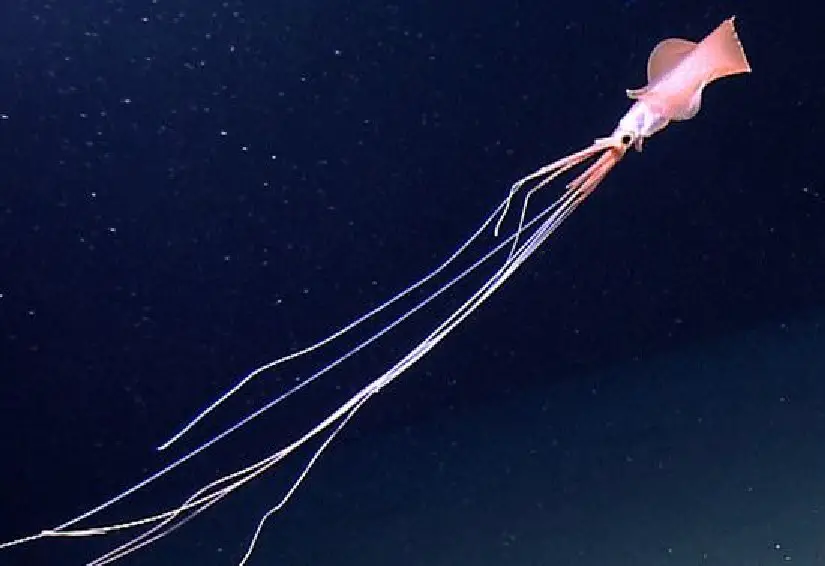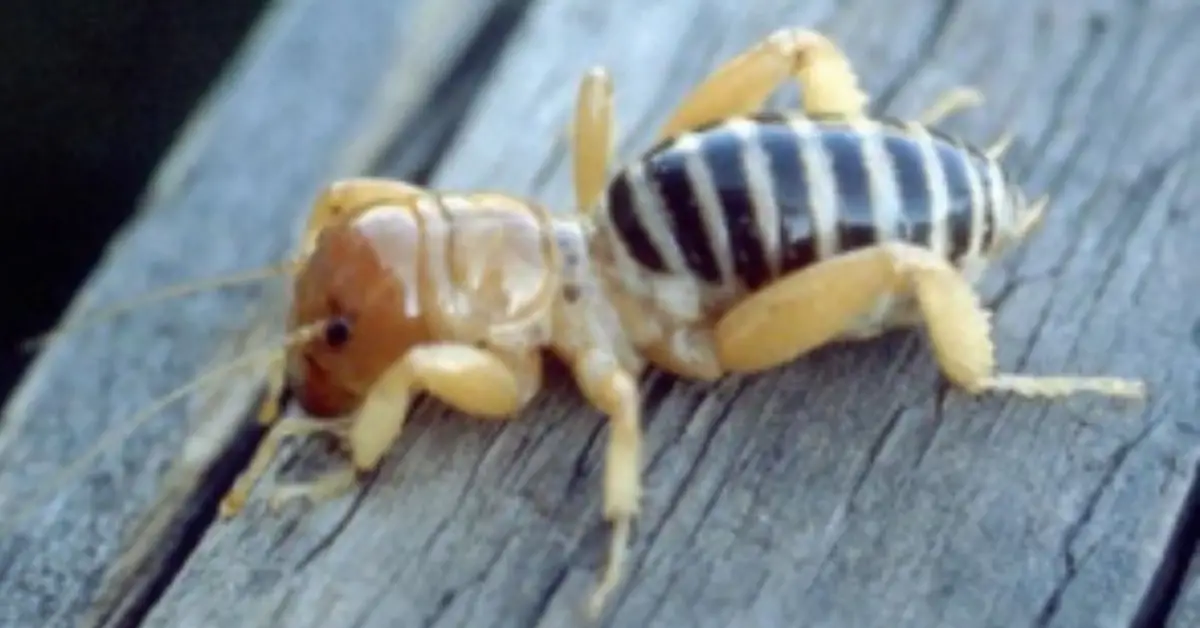Axolotls are a kind of aquatic salamander that are native to the freshwater lakes and canals of Mexico City. They are known for their unique appearance, which features a flat head, wide eyes, and long, feathery gills. Those gills protrude from either side of their head. Axolotls are popular pets due to their interesting appearance and relative ease of care. They have also been used extensively in scientific research due to their ability to regenerate their limbs and other body parts. In this article, we will explore the biology, behavior, and cultural significance of this creature.
Physical Characteristics
The axolotl is a fully aquatic amphibian that is found in a range of colors, including black, brown, and shades of grey. It has a flattened head, small eyes, and a wide mouth with a pinkish-red gill lining. Its body is long and slender, with four legs that are thin and weak. The axolotl also has a long tail that is flattened horizontally and helps it to move through the water. Interestingly, it has the ability to regenerate its limbs, spinal cord, heart, and other organs. Which has made it a valuable model organism in scientific research.
Habitat and Distribution
Axolotls are found exclusively in the waters of Lake Xochimilco and Lake Chalco, which are located in the valley of Mexico City. These lakes were once part of a larger system of water bodies that covered much of the valley. But they have since been reduced in size due to human activities such as urbanization and agriculture. As a result, the axolotl is now listed as a critically endangered species by the International Union for Conservation of Nature (IUCN).
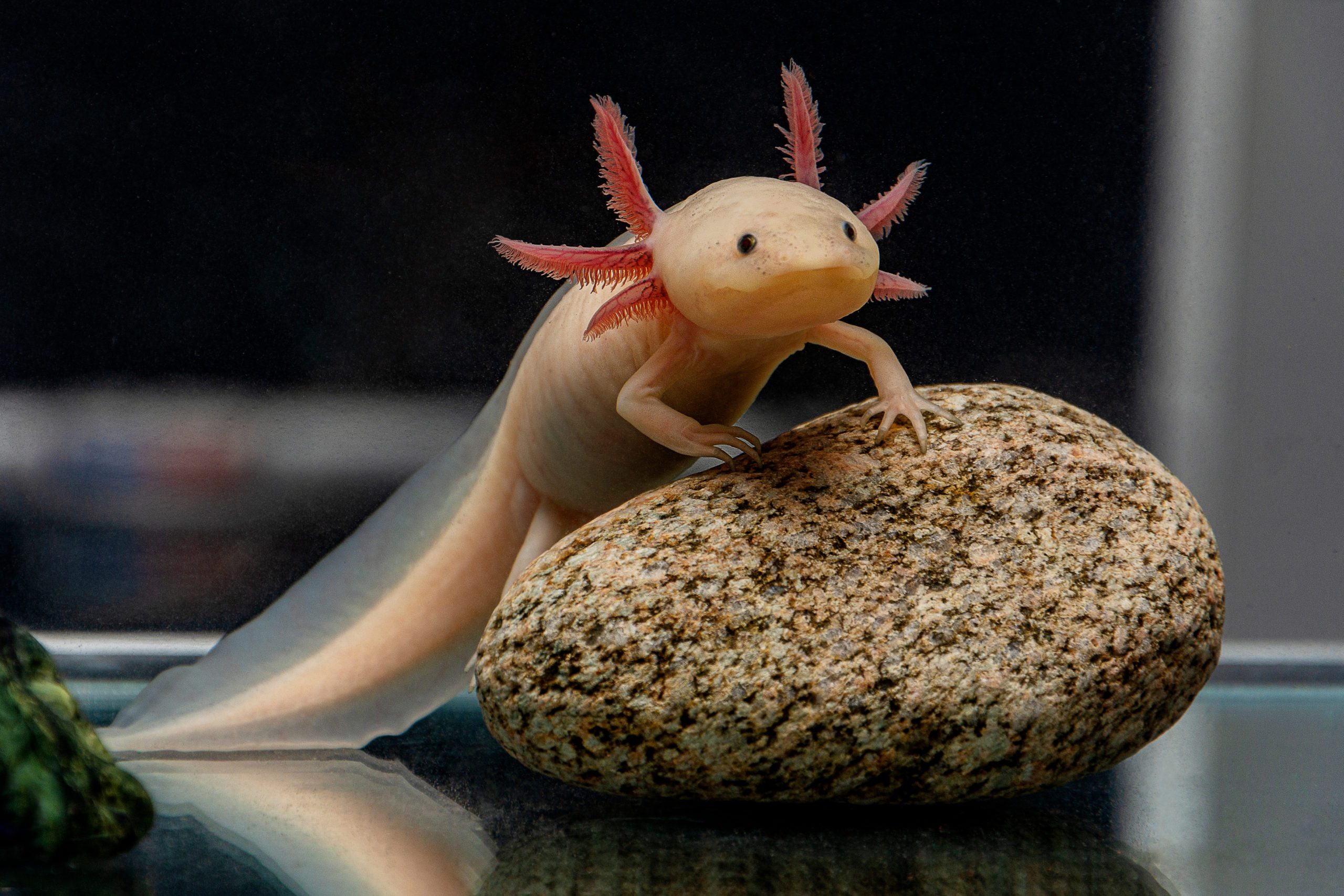
Fig. 1 Axolotl Amphibian
Behavior and Diet
Axolotls are primarily nocturnal and spend most of their time hiding in submerged vegetation or in crevices in the lake bed. They are carnivorous and feed on a variety of small aquatic animals, including insects, fish, and crustaceans. Despite their weak legs, they are capable of capturing and consuming relatively large prey, such as small fish and shrimp. Axolotls are also known to cannibalize other axolotls if food is scarce.
Breeding and Reproduction
One of the most interesting aspects of the axolotl’s biology is its ability to reach sexual maturity without undergoing metamorphosis. Unlike most amphibians, which transform from a larval form to an adult form, axolotls remain in their larval state throughout their lives. This means that they retain their gills and fins and are fully adapted to an aquatic lifestyle. When it comes to reproduction, axolotls are known to breed throughout the year, with peak activity occurring during the rainy season. Females can lay up to 1,000 eggs at a time, which are fertilized externally by the male. The eggs hatch after about two weeks, and the young axolotls take another two to three months to reach sexual maturity.
Role in Scientific Research
The axolotl has long been a favorite subject of scientific research, thanks to its unique ability to regenerate its body parts. Researchers have studied the axolotl’s regenerative abilities for decades, in the hope of unlocking the secrets of tissue regeneration in humans. One of the most impressive examples of this ability is the axolotl’s ability to regenerate its spinal cord. When a portion of the spinal cord is removed, the axolotl can regenerate the missing tissue and recover normal movement within a few weeks. This has led to numerous studies aimed at understanding the mechanisms behind this regenerative process. Which develops new therapies for spinal cord injuries in humans.
Another area of research that has been enabled by the axolotl is the study of limb regeneration. Axolotls are capable of regenerating their limbs, including bones, muscles, and nerves, with remarkable precision
Cultural Significance of Axolotls
Axolotls have played an important role in the culture and mythology of Mexico for centuries. In Aztec mythology, the god Xolotl is said to have transformed himself into an axolotl to hide from his enemies. The name “axolotl” is derived from the Aztec words “atl” (meaning water) and “xolotl” (the name of the aforementioned god).
Today, axolotls are still an important part of Mexican culture. They are sometimes referred to as “Mexican walking fish,” although they are not actually fish. They are also used in traditional medicine, where their gills and skin are believed to have healing properties.
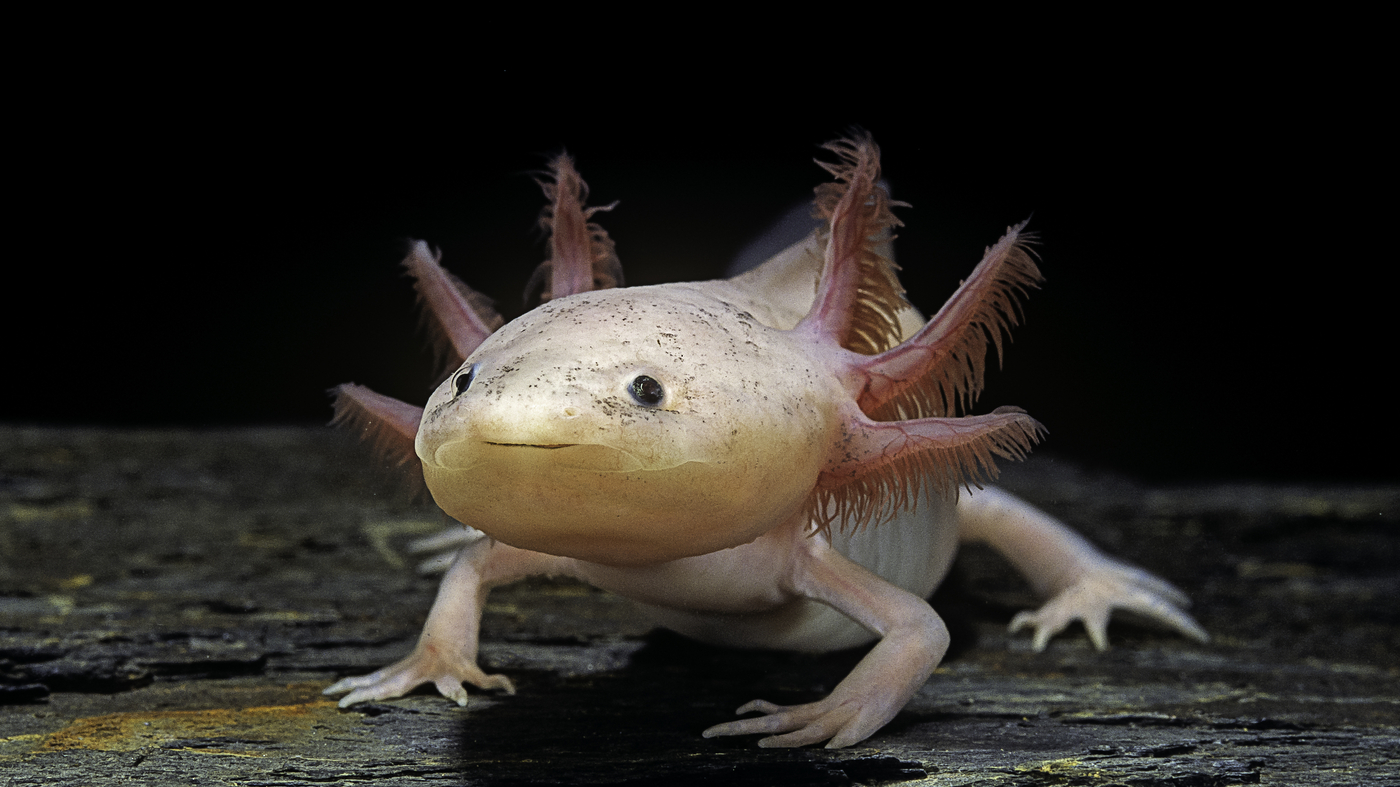
Fig. 2 Adult Axolotl
Biology of Axolotls
Axolotls are members of the family Ambystomatidae, which includes over 30 species of salamanders. They are particularly notable for their ability to retain many juvenile characteristics throughout their adult lives. Which is a process known as neoteny. In the wild, these animals can live for up to 15 years, but in captivity, they can live for up to 25 years.
Axolotls have a unique anatomy that sets them apart from other salamanders. Their flat head is triangular in shape, with eyes that are set on the sides of their head. This gives them a wide field of vision, allowing them to see in nearly all directions at once. Their most distinctive feature, however, is their gills. Axolotls have a pair of external gills that extend from either side of their head. These gills are used for both breathing and feeding. They are also able to absorb oxygen through their skin, which allows them to remain underwater for long periods of time.
Axolotls come in a variety of colors, including white, black, gray, and various shades of brown. They can also have a spotted or marbled pattern. One particularly interesting variety of axolotl is the “leucistic” axolotl, which lacks pigment and appears white or pale pink.
Baby axolotls
Baby axolotls, also known as axolotl larvae, are the juvenile form of axolotls. They are typically born with external gills, which they use to breathe and filter food particles from the water. Baby axolotls are very small when they are first born, typically measuring only a few centimeters in length.
Like adult axolotls, baby axolotls are carnivorous and require a diet of small, meaty foods. In the wild, they feed on a variety of small organisms, including insects, crustaceans, and small fish. In captivity, they can be fed a diet of newly hatched brine shrimp, daphnia, and other small, live foods.
One of the most remarkable aspects of baby axolotls is their ability to regenerate their limbs and other body parts from a very young age. In fact, some scientists have found that baby axolotls are able to regenerate their limbs even more quickly than adult axolotls. This makes them a valuable model organism for studying the process of regeneration and its potential applications in regenerative medicine.
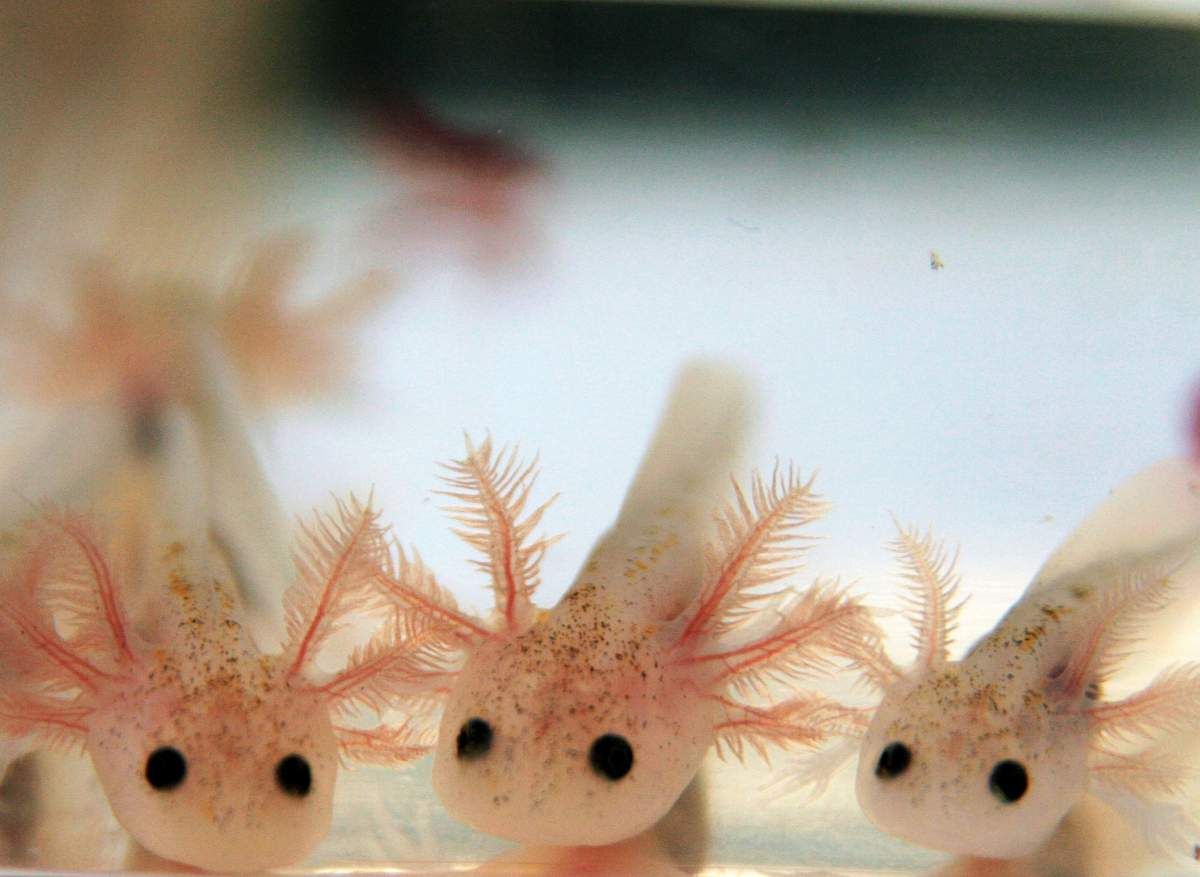
Fig. 3 Baby Axolotl
Caring baby Axolotls
When caring for baby axolotls, it is important to provide them with a suitable habitat. This typically means a tank or aquarium with clean, fresh water that is well-aerated and free from any contaminants. It is also important to provide plenty of hiding places and plants, as baby axolotls are naturally shy and may become stressed in an open environment.
In terms of temperature and water chemistry, baby axolotls require similar conditions to adult axolotls. The ideal water temperature for axolotls is between 16-18°C, and the pH should be kept between 6.5-8.0. Ammonia and nitrite levels should be kept at zero, as they are sensitive to these compounds.
Overall, caring for baby axolotls requires a bit of knowledge and effort, but can be a rewarding experience for those who are willing to put in the time and effort. With proper care, baby axolotls can grow into healthy, active adult axolotls with unique personalities and fascinating regenerative abilities.



